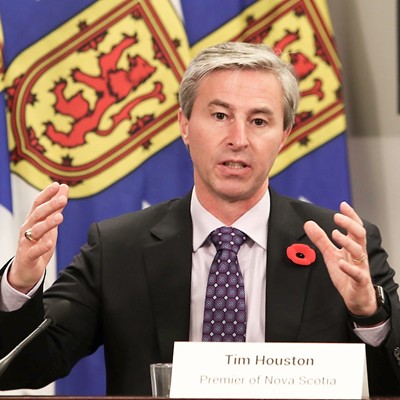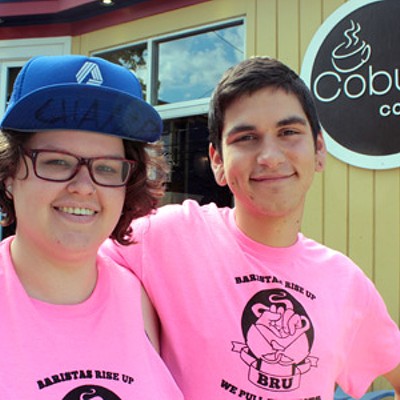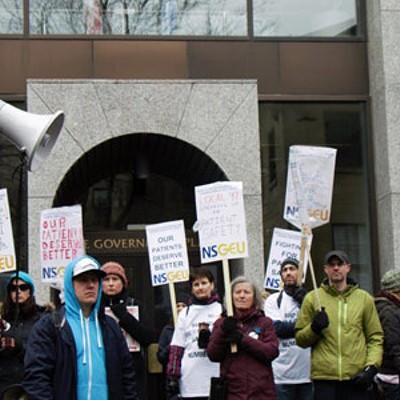Of all the things you learn at school, it’s the life lessons that stick with you the longest. Unfortunately, you’re usually left to learn them on your own. None of Halifax’s universities offer courses like Ditching Your Hometown Boyfriend or Contemporary Issues in Tattoo Design and Placement. Consider what follows here to be Nightclub 101; a self-guided course of study for all you rookies with wet ink on your age of majority cards.
Start thinking about your night out before you leave the house. It may seem cheaper to toss back a couple of shots at home before heading out, but be careful. Drink to excess and you could find yourself tossed out 20 minutes after you fork over the cover charge. That’s if you make it past the door. Instead, try showing up early. Nova Scotia’s 3:30am last call is one of the latest in the country and consequently many people don’t leave the house before 11pm. To drum up sales, bars and clubs offer drink specials and happy hours earlier in the night.
Leave your flask and your underage roommate at home, and bring ID. There’s little hope of sweet-talking your way past the doorperson. The Nova Scotia Alcohol and Gaming Authority issues huge fines ($5,000 each to the server, bar manger and owner) for minors on the premises, and security staff have already heard every lie you could think up. Acting indignant when you’re carded is totally out of line, unless you’re over 40. Have your ID in hand when you approach the door. A few bars in town require patrons submit to a search, or be scanned with a metal detector. It’s for everyone’s safety, so grin and bear it. Matt, a doorperson at the Marquee, puts a fine point on it: “We’re just here to do a job, and that job is to protect the patrons and the establishment.” And don’t be a smart-ass. Matt’s particularly tired of hearing people joke “Oh, I left my gun at home tonight.”
Once you’ve gotten in, take a look around and make your way to the bar. As simple as it seems, there is a correct way to order. “If it’s busy, be patient,” explains Joe, a bartender in Hell’s Kitchen. “Courtesy is important.” While you wait, scan the bar for a price list. The fewer questions you ask, the quicker you get your drinks. When you make it to the bar, assume the ready position (leaning slightly forward, cash in hand) and wait for the bartender to make eye contact. Snapping, whistling, yelling or waving your money like it’s on fire will only prolong your wait. Once you have the bartender’s attention, order all your drinks at once, like this: “Two Olands, a G & T and a shot of Jagermeister, please.” There is absolutely nothing more annoying than someone who monopolizes the bartender, waiting for each drink in a round to arrive before ordering the next.
Still waiting? Think back to the door. Bar staff communicate. If the bouncer has told the server that, say, the guy in the red ball cap is drunk, or a dick, you’re in for a long wait.
Now that you’ve got your drink, tip. That is, if you were served efficiently and courteously and received what you ordered, tip. It’s is not an issue for discussion by budding philosophy majors. Tipping does not make you complicit in the subjugation of proletariat wage slaves. Tips reward and ensure good service, period. The better you tip, the faster you get served. Conversely, if you receive service that is rude, incompetent or just plain bad, don’t tip. This only accomplishes something if you actually tell the server what went wrong. If the problem’s bad enough, talk to the manager. But if you scoop up your change and walk away in a huff, you’re just another chump.
How much you tip depends on what you spend. Twenty percent is what the server’s hoping for and pretty much guarantees that you get their attention. To calculate it quickly, think of it as $1 for every five you spend. When you’re buying a round for your buddies, suck it up—you’re tipping for them too. Feel like celebrating your student loan with a snifter of Louis XIII Cognac ($90/oz at the Economy Shoe Shop)? That’s an $18 tip per shot, moneybags.
If you’ve made it to the bar and back a few times, you’re probably feeling the booze by now. Respect your own limits or you’ll regret it well before the hangover sets in. Strictly speaking, anyone showing signs of intoxication must be removed from the premises. Staggering, screaming, bothering other customers and belligerence all raise red flags with security. At the front door of Reflections they make it clear with a sign that states, “Enough is enough. Aggressive behaviour will not be tolerated in this bar.” Most people go out to bars to have a good time and one drunken asshole can ruin it for everyone. Don’t be that asshole (or let your friends be that asshole). If they’ve had too much, call a cab and see them home. There is nothing charming or romantic about the drunk tank.
Fifteen to 30 minutes before service ends is when last call is announced (some bars flash their lights as a signal). Get up to the bar one last time, using the previously described method to get your drink quickly. Tip. Kick back in your seat and spend the time chatting up your friend’s date while he flails his money, snapping his fingers at the bartender. Half an hour after service ends the bar must be clear of patrons and drinks. Move along quickly, because even the friendliest servers have little patience at this time of night. Shannon, a bartender at Charlie’s, puts it bluntly: “When it’s time to go, it’s time to go.”
Originally published September 4, 2003.















